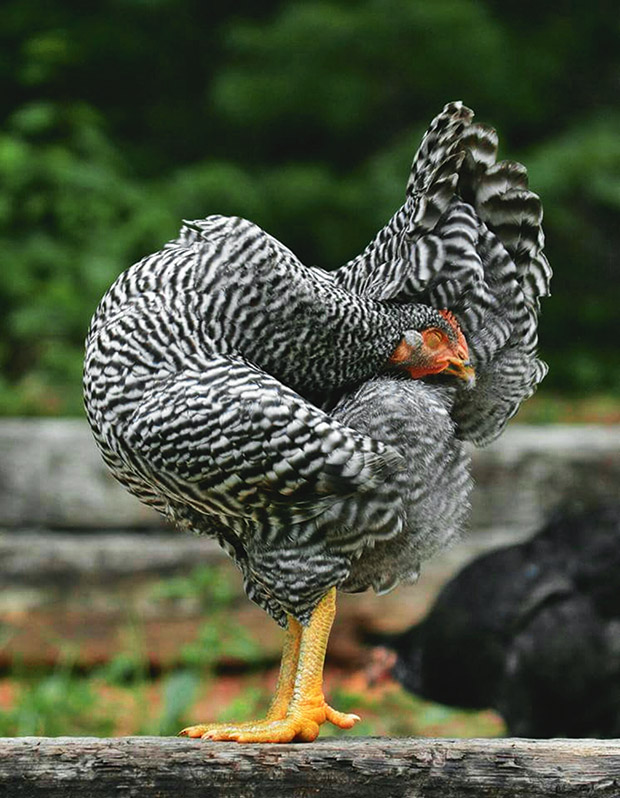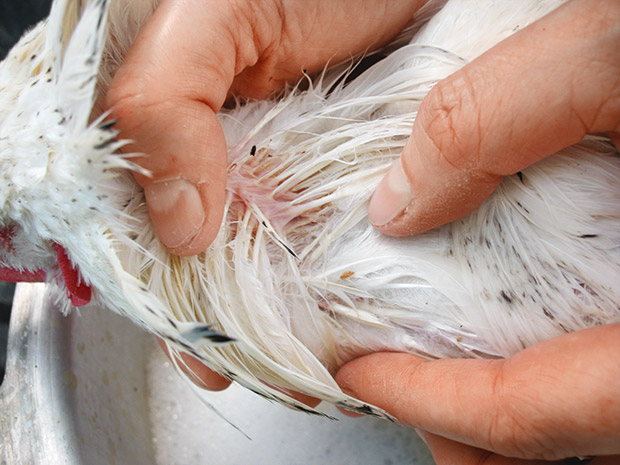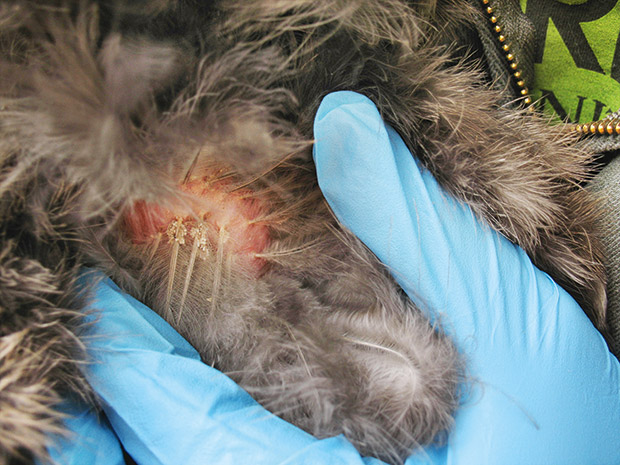5 things to know about lice in poultry

They’re small, they’re fast, and they can bug your birds all year round.
Words: Nadene Hall
Several types of lice infest poultry. The most common are brown lice, small (about the size of a sesame seed) and usually pale brown, but they can vary in colour, including white, yellow or black.
Lice spread when birds come in contact with an affected flock mate or wild birds, and are more common in humid climates. They scurry around so fast, you have to be quick to spot them when you part the feathers as they run from light. It’s easier to spot their egg clusters, glued to the base of feather shafts, most often around the vent and tail area.

Lice are often the same size and colour as sesame seeds.
Lice eat skin flakes and feather dander/fluff. Symptoms include:
•irritation;
•itching;
•increased preening;
•feather damage/loss;
•pale comb and wattles due to anaemia;
•red patches of skin;
•bacterial infections in the skin.
Egg production may fall, and younger birds won’t grow as fast.
6 WAYS TO CONTROL LICE
1. Have a dust bath area or provide a large pan or container for dusting to help birds get rid of lice themselves. Ideally, mix 6 cups of diatomaceous earth (DE) with 12kg of washed sand (the fine sand used by builders and in sandpits) – it’s available by the bag in hardware stores. Mix well, and always wear a dust mask or respirator while mixing.
2. Dust birds with sulphur powder (flowers of sulphur, available from rural feed stores) – make sure the powder reaches the skin. Repeat regularly.
3. Apply a dose of ivermectin, 0.1ml (1 drop) per kg of bodyweight, eg 2 drops for a 2kg bird. The withholding period for meat and eggs is at least 14 days after treatment or as advised by a vet.
4. Use a louse treatment, available from poultry supply stores.
5. Spray the coop with an insecticide such as Extinosad (not for use on birds).
6. If possible, leave the coop empty for a time as lice can’t survive without poultry to feed on.
HOW CHICKENS CAN SELF-APPLY SULPHUR POWDER
Sulphur powder will kill northern fowl mites and lice if it can reach the skin. Research has found small gauze bags of sulphur dust hung in nest boxes, coop doorways, and beside feeders will adequately dust birds as they brush past it.

Clumps of lice eggs at the base of feather shafts.
Scientists believe the chicken’s body heat converts the sulphur into hydrogen sulphide (what you smell in Rotorua), which works as a fumigant. The researchers used 100% cotton gauze, sewn into bags 7cm x 12cm, each holding 30g of sulphur powder. The bags were stapled shut and hung where birds would naturally brush up against them.
Even small amounts of sulphur had a significant effect on mite and lice numbers within a week, with near elimination within three weeks.
Source: Sulfur Dust Bag: A Novel Technique for Ectoparasite Control in Poultry Systems, 2016
WARNING: WHAT NOT TO USE
1. Never use Frontline for dogs or cats (fipronil) on poultry. It’s toxic, potentially deadly, and contaminates eggs.
2. Never use dog, cat, or livestock products on poultry unless explicitly approved by a vet. There’s a high risk of overdose or an adverse reaction.

